In Darlow Smithson Productions’ 2004 Bafta award-winning feature documentary Touching the Void, the pivotal dramatic moment comes when climber Joe Simpson is left hanging by a rope after an accident hundreds of feet up a mountain.
That incident, which left a profound impression on Simpson as he contemplated his fate, provided the basis for a drama-doc from DSP based on Simpson’s book The Beckoning Silence.
In the book Simpson describes how he was inspired to climb by the story of Toni Kurz, a brilliant young German mountaineer who, in 1936, died hanging onto the end of a rope after attempting to conquer the unclimbed north face of the Eiger in the Swiss Alps.
Over 50 years later in Peru, Kurz’s story haunted Simpson as he battled for his own survival while dangling in mid-air. His plight uncannily mirrored that of Kurz - except against all the odds Simpson survived.
“Joe talked to us about this when shooting reconstructions on the Eiger for Touching the Void,” recalls executive producer John Smithson. “During filming I read The Beckoning Silence and became captivated by the mountain and Joe’s story.”
He admits to feeling some trepidation about revisiting the subject matter behind DSP’s biggest hit. “It’s like second album syndrome,” says Smithson. “I am immensely proud of Touching the Void and was very nervous of the huge expectation in trying to make lightning strike twice.”
Channel 4, the primary backer for Void, was the natural home for the follow-up project, which was commissioned by C4 head of specialist factual Hamish Mykura and head of history Ralph Lee.
“Unlike most productions of this kind, we were keen to limit our co-production partners so we could author it properly and not have decisions pass through too many hands,” explains executive producer Julian Ware.
The Beckoning Silence is not, Ware and Smithson insist, a sequel to Touching the Void but it is intended to answer a lot of the questions posed by its predecessor, such as why people risk their lives for a goal as seemingly futile as scaling a mountain peak.
“Touching the Void had such a powerful story and strong first-person narration, the real challenge was not mucking it up. The challenge with The Beckoning Silence was to find a way of telling a much more complicated historical narrative,” says Smithson.
“The story centres on a reconstruction of the 1936 expedition but it is also an exploration of Kurz and Simpson’s motives for climbing,” adds Ware. “It’s the hardest proposal I’ve had to write because it was very difficult to pin down exactly what it’s about.”
The director’s role was handed to Louise Osmond, the creative force behind Darlow Smithson theatrical doc Deep Water, which mixed archive material and fresh interviews to recount the tale of amateur yachtsman Donald Crowhurst’s bid to sail solo around the world.
“What attracted me was the extraordinary personal connection between Joe and Kurz,” says Osmond. “As a child, Kurz’s story captured Joe’s imagination. He takes up climbing as a result then finds himself suffering almost the same fate as his hero.”
To convey the parallels in each climber’s life, the dramatic reconstruction of Kurz’s tragic ascent is cut together with home movie material from Simpson’s career and film of Simpson retracing Kurz’s steps on the Eiger.
A 23-person crew including Simpson and four experienced Swiss climbers playing Kurz and his party, spent three weeks on the Eiger last March under the supervision of mountaineering expert Brian Hall, who had also guided the Touching the Void shoot.
Much of the filming was on the lower slopes of the mountain, enabling the team to decamp to an historic hotel each evening “which at 200ft above the valley and eerily empty felt like the set of The Shining,” says Osmond.
Although the team were lucky with some clear days for filming they also prayed for and got a ferocious storm. “We needed a really precise breakdown of weather, a good two-thirds of which needed to be deteriorating conditions to match what Kurz experienced,” she says. “You can never create a credible snow storm with a snow machine.”
The concave face of the Eiger creates a cauldron of fast-changing weather from strong wind, bright sunlight, dark clouds and biting cold. Maintaining the two Panasonic Varicam cameras under such extreme conditions was an initial concern but Osmond threw caution to the wind and often used them in tandem, rather than keeping one in the hotel in reserve.
Typically one was held by specialist mountain cameraman Keith Partridge on a high position and the other by lead operator Jeremy Hewson for wide shots and close-ups. The Varicams also yielded “filmic quality” high-definition rushes which revealed “wonderful detail without the brittle, glossy nature of some HD material,” reports Osmond.
Unlike Touching the Void, there are no immediate plans to distribute the film theatrically, but the decision to acquire in HD was partly taken with that and international sales in mind.
“The Eiger looks stunning on HD but because this is a much more complex, authored film, its natural home seems to be TV not cinema,” notes Smithson.
As a result of his near-death experience in Peru, Simpson began to question his own climbing obsession, a process that led to him slowly falling out of love with the sport. “When you’re on an ice field staring up at a 6,000ft sheer rock face for three weeks it does focus the mind,” admits Osmond, a climbing novice. “The Eiger is a terrifying mountain. There’s something sinister about it that really got under my skin.”
TX: The Beckoning Silence
Broadcaster: Channel 4
Producer: Darlow Smithson
Starts: 22 October, 9pm
Length: 90 minutes
Commissioned by: Ralph Lee and Hamish Mykura
Producer/director: Louise Osmond
Executive producers: John Smithson and Julian Ware
Lead camera operator: Jeremy Hewson
Climbing cameraman: Keith Partridge
Sound engineer: Olly Astels-Jones
Editor: Ben Lester


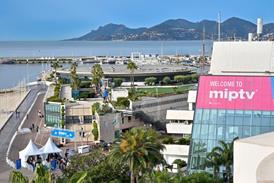








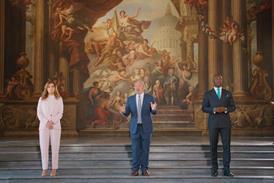


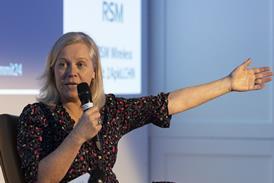

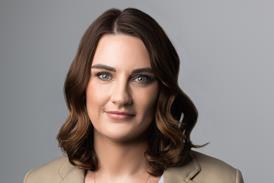
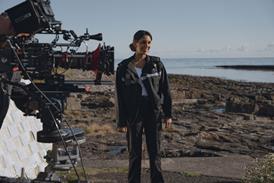







No comments yet